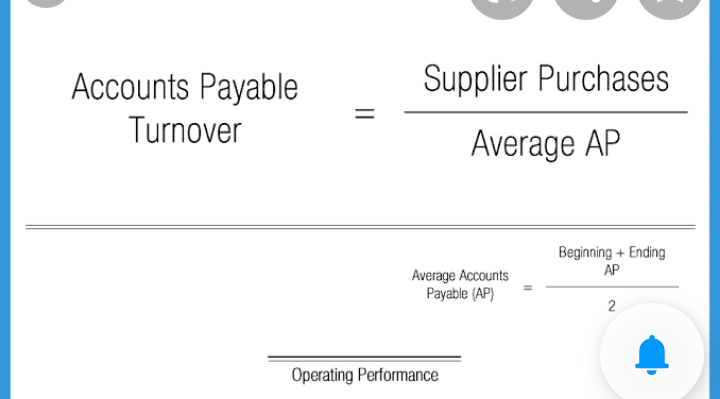Hardly do we find companies or businesses in this century that are free from debt or that have not, at one time or another, owed a debt. As a businessman, you most likely would find yourself in such a position; congratulations, this article gives you an overview of how to handle your Account Payable (process, functions, journal entry with examples for easy learning).
What is Account Payable?
Accounts payable is money owed by a business to its suppliers, shown as a liability on a company’s balance sheet. Also, it is different from note payable liabilities, which are debts created by formal legal instrument documents.
Account Payable Function
When it comes to the account payable departments, they perform some functions, which includes the following below:
#1. Firstly, processing and paying approved vendor invoices.
#2. Secondly, obtaining W-9 or other tax identification information from suppliers.
#3. Also, processing and paying valid and approved business travel reimbursements (or small expense reimbursements not charged on a business P-card) to employees.
#4. Furthermore, preparing financial reports related to accounts payable.
The above are some Account Payable Functions.
Account Payable Examples
#1. Raw Materials/Power/ Fuel Purchase.
#2. Transportation and Logistics.
#3. Assembling and Subcontracting Works.
#4. Also, traveling.
#5. Furthermore, equipment.
#6. In addition, leasing.
#7. Lastly, licensing.
The above are Examples of Account Payable
Account Payable Job Description
Payable Clerk duties include:
#1. Firstly, processing accounts and incoming payments in compliance with financial policies and procedures.
#2. Also, performing day-to-day financial transactions, including verifying, classifying, computing, posting, and recording accounts receivable data.
#3. Lastly, preparing bills, invoices, and bank deposits.
Account Payable Jobs
Below are some listed jobs
#1. Payable Manager
Thermo Fisher Franklin, MA, USA. Thermo Fisher Scientific Jobs full–time.
#2. Payable Specialist
Uline Chicago, IL, USA.
Glassdoor, full–time.
#3. Lead Accounts Payable Clerk
Robert Half Deer field Beach, FL, USA.
Robert Half $45K– $60K a year full–time.
#4. Payable Specialist.
Randstad US, South Windsor, CT, USA.
Glassdoor full–time.
#5. Accountant – Payable
Chatham University Pittsburgh, PA, USA.
Inside Higher Ed Careers Over, full–time.
#6. Payable Analyst
UC Health Aurora, CO, USA.
UC Health full–time.
#7. Accountant.
Collabera Austin, TX, United States. Collabera Contractor.
#8. Supervisor Payable.
Constant Contact, Endurance Group.
Waltham, MA, USA. Endurance Group Jobs, full–time.
#9. Accounts Specialist
Pride Staff Financial Alpharetta, GA, USA.
Pride Staff Financial Jobs.
#10. Global Payables.
Operations Center of Excellence (COE) Leader Baker Hughes Houston, TX, USA.
Baker Hughes full–time.
Account Payable Formula
#1. Firstly, accountants have to divide the total purchases by the average accounts payable for the year to get the turnover.

The next sub-topic shows you the Payable Process.
Account Payable Process
The full cycle of the Accounts Payable process includes invoice data capture. Also, it involves coding invoices with the correct account, approving invoices, matching invoices to purchase orders, and posting for payments. Basically, the account payable process is only one part of what is known as procure to pay.
#1. Receiving the bill
Basically, while dealing in goods, the bill/invoice helps in tracing the number/quantity of goods received. Therefore, the time for which the bill is valid can also be known when the bill is received on time.
#2. Scrutinizing the bill for details
Also, the vendor’s name, authorizations, date, and requirements raised with the vendor based on the purchase order can be verified too.
#3. Updating the records for the bills received
In addition, ledger accounts connected to the bills received need to be updated. Therefore, an expense entry is usually required to be made in the books of accounts. Also, in cases when accounting software is used, recording some expenses may require managerial approval. The approval will be based on the bill value.
#4. Making timely payment
Furthermore, as and when the due dates arrive (based on a mutual understanding with the vendor/creditor), the payments need to be processed. Meanwhile, the documents required here need to be prepared and verified. Details entered on the cheque, vendors’ bank account details, payment vouchers, the original bill, the purchase order, etc., must be scrutinized. Also, the signature of the authorized person may be required.
Therefore, once the payments are made, the vendor or creditor ledger account has to be closed in the books of accounts. Hence, this will reduce the liability that was earlier created. In other words, the amount shown as payable will no longer be seen as a liability.
If you’re used to managing your own personal bills, you should have no problem transitioning to the accounts payable process.
However, there are other things you need to do in order to prepare and process accounts payable properly for example.
# 1. Ensure you pay for any invoices due
Go through your accounts payable weekly to know what payments are due. Basically, you can use a manual accounting system or accounting software, you’ll need to review due dates to see which invoices need to be paid.
#2. Create your chart of accounts
One of the most important things you’ll need to do before you begin to process accounts payable is create a chart of accounts that works with your business. Basically, our chart of accounts is where all of your accounting transactions (including Accounts payable) should be.
#3. Set up suppliers details
Basically, if you are tracking accounting transactions using accounting software, you’ll need to record suppliers’ details.
#4. Ensure that the details of the bills are accurate
Importantly, Accountants need to ensure that the bill received from suppliers are accurate.
Therefore, if a bill is for goods ordered, ensure that the goods listed in the invoice have all been received. Also, if the invoice is for services rendered, ensure the services were provided as described on the invoice. It’s important to complete this process for any invoice received.
Once this is complete, you can begin the process of entering the invoice information, either in your ledger accounts or in your software application. Also, if you enter all accounts payable for your business, you can approve bills as you examine them.
However, if you employ a clerk, you’ll need to provide that person with general guidelines on invoice approval, as well as perhaps a dollar limit the clerk can approve themselves.
Account Payable vs. Receivable
As explained earlier, receivables are the amounts owed to a company by its customers, while payables are the amounts that a company owes to its suppliers. However, both are compared to see if there are enough funds from receivables to pay for the outstanding payables. This comparison is most commonly made with the current ratio, though the quick ratio may also be used.
Is Accounts Payable a Debit or Credit?
Due to its nature as a liability, accounts payable should be credited. For any given business, the credit balance represents the sum it owes to its suppliers. When you place an order for goods or services without first putting up the cash to pay for them, this represents an accounts payable liability.
Is Accounts Payable a Difficult Job?
True, dealing with accounts payable can be challenging. Accounting clerks are responsible for managing and entering data to keep track of a business’s financial records, a task that can be challenging due to the gravity of the consequences that follow from even the smallest of errors.
What Skills do you need for Accounts Payable?
To effectively handle an account payable, there are some skills that you need to acquire and they include the following below:
- Knowledge of accounting principles and Accounts Payable processes.
- Expertise in the ordering procedure is a plus.
- The ability to think and act independently.
- Compelling mastery of Microsoft Excel.
- Strong data entry skills for expense reports.
What Type of Entry is Accounts Receivable?
Accounts receivable journal entries are the written documentation of AR transactions in a company’s books. To properly record this type of financial transaction, this is a necessary step. In accounting, sales for which payment has not yet been received are referred to as accounts receivable.
What Type of Ledger is Accounts Payable?
The accounting ledger, referred to as “accounts payable,” details the monetary obligations owed to various third-party vendors and service providers. Accounts payable (AP) are a form of credit extended by a vendor to a business (the buyer) in exchange for delayed payment of goods and services.
What is the Double Entry for Accounts Payable?
In double-entry accounting, however, an increase in accounts payable is always reflected as a credit. The amount an organization owes its vendors is reflected by the credit balance in accounts payable. The credit balance increases once payment has been received against the invoice total.
Is Accounts Payable Good Career?
Yes, it is. Many different types of companies need people with experience in accounts payable, so it’s a growing field. Almost all businesses with significant financial resources have a separate division called accounts payable that is in charge of paying bills to vendors and other business partners.
Other differences between receivable and payable are as follows:
#1. Receivables are classified as a current assets, while payables are classified as a current liability
#2. Also, payables have no such offset while receivables may be offset by an allowance for doubtful account
#3. In addition, receivables usually only involve a single trade receivable account and a non-trade receivables account, while payables can be comprised of many more, including trade payables, sales tax payables, income tax payables, and interest payables.
Let’s consider an Account Payable Journal Entry below
Account Payable Journal Entry
| Date Particular Debit Credit | |||
| 6 Mar 20 Purchases Account $6000 To Payable $6000 | |||
| (Being Inventory purchased on credit). | |||
| Date Particular Debit Credit | |||
| 20 Mar Payable $6000 To cash Account $6000 | |||
| (Cash paid to the suppliers for inventory purchased on 6 Mar 2020). |
Conclusion
With this information, I believe you have learned a lot with respect to handling the accounts payable of your business.






